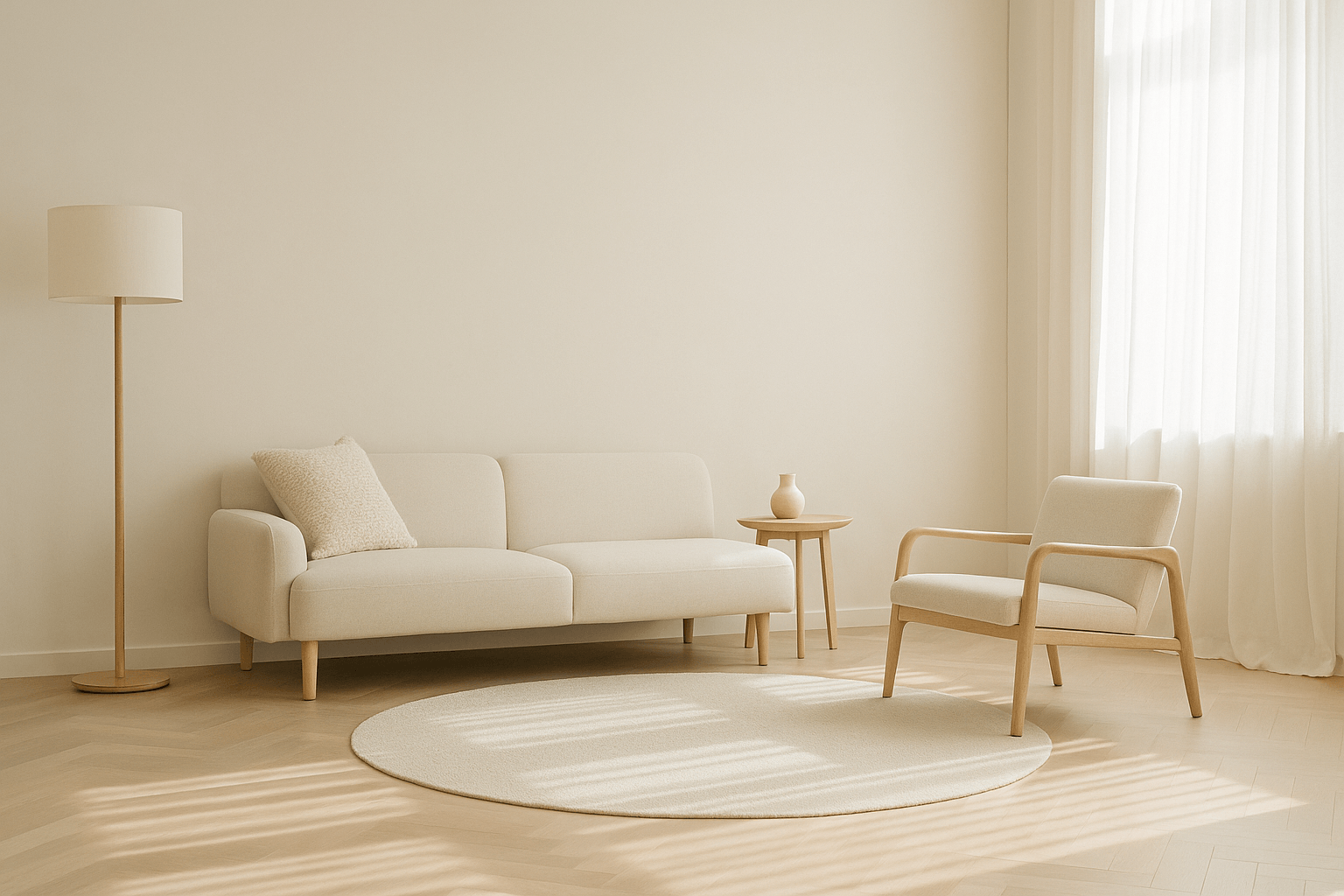Why Touch Matters in a Minimalist Home
When we think of minimalist design, we often think of how it looks: clean lines, soft palettes, open space. But truly impactful interiors aren’t just visual—they’re sensory.
In a minimalist space, where visual stimulation is reduced, touch becomes more important. It’s the natural next layer—the one that makes a home feel warm, grounded, and alive.
What Are Tactile Interiors?
Tactile interiors focus on the sensory experience of a space—especially touch. They prioritize:
-
Natural textures
-
Material contrast
-
Softness vs. solidity
-
Temperature, grip, grain, and rhythm
In minimalist homes, where each item is intentional, how something feels matters as much as how it looks.
Why Tactility Belongs in Minimal Design
-
Creates warmth without clutter
Texture replaces excess. A boucle cushion or linen curtain can warm a space more than extra decor. -
Invites interaction
When we engage with materials—touching clay, brushing against wood—we connect physically with our space. -
Supports emotional calm
Soft and natural materials help regulate the nervous system, encouraging rest and comfort.
How to Layer Touch in a Minimalist Home
1. Start with Foundational Textures
Use large-scale elements like:
-
Linen or gauze curtains
-
Soft wool rugs
-
Textured wall finishes (plaster, limewash)
These form the sensory base of the room.
2. Mix Natural Materials
Bring in variation with:
-
Smooth ceramics
-
Grainy wood
-
Matte metal
-
Woven baskets
The contrast makes each texture stand out, even in a neutral palette.
3. Choose Upholstery Wisely
Go for tactile fabrics like:
-
Bouclé
-
Washed linen
-
Cotton canvas
Avoid slick synthetics that look clean but feel cold.
4. Use Handmade or Imperfect Pieces
Objects that feel irregular—like a hand-thrown bowl or rough-edged tray—add quiet soul to minimalist spaces.
5. Keep Palettes Soft
Tactile rooms work best with earthy tones and soft whites. They create a sensory softness that enhances the feel of materials.
Tactility and Mindful Living
A tactile home encourages you to slow down:
-
To notice the feel of your cup in the morning
-
To enjoy the warmth of sunlight on textured walls
-
To feel at home in your body, not just your space
This is where design meets mindfulness.
Final Thoughts
Minimalism isn’t sterile when it’s built for the senses. Through tactility, we create warmth, connection, and calm—without adding clutter.
Let your home invite touch. Let it ground you. Let it be more than seen—let it be felt.
















